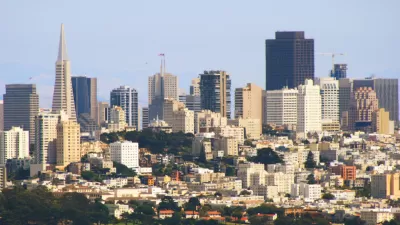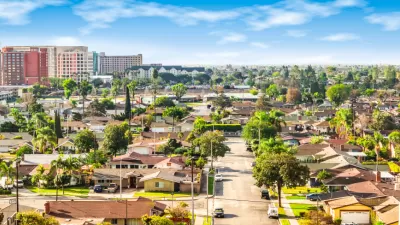To meet state-mandated housing goals, San Francisco plans to accommodate thousands of new housing units focused in the city’s west side, which has seen little growth for decades.

In an update to its housing element, San Francisco plans to allow for 34,000 additional housing units via rezoning. As J.K. Dineen writes in the San Francisco Chronicle, “The 34,000 units of ‘added capacity’ will be focused in ‘high-resource’ commercial corridors of the city — much of it in the Sunset and Richmond districts — that have not seen much development in recent decades.”
Per California’s Regional Housing Needs Assessment (RHNA), the city needs to create 82,000 housing units by 2031. “In addition, the element must create a blueprint for ‘fair housing,’ which means that a significant amount of the new residential development must occur in ‘well-resourced’ neighborhoods where discrimination and zoning rules have historically combined to keep out newcomers — especially people of color — and new buildings.” Sometimes viewed as a toothless exercise, the RHNA came into focus this year when the state rejected housing element updates from many cities, citing unrealistic projections or insufficient efforts to meet housing demand and provide for affordable, inclusive housing.
San Francisco’s new housing element acknowledges the challenges to adding new housing in the city. “In addition to increasing the amount of housing planned for rezoned neighborhoods, the new housing element draft added analysis on the factors that slow down housing production, such as the city’s politically-charged discretionary review process.” For example, the city will consider eliminating conditional use permitting for replacing single-family homes with multi-unit buildings.
FULL STORY: S.F. plans to rezone the city to allow the production of 34,000 new homes — many on the westside

Study: Maui’s Plan to Convert Vacation Rentals to Long-Term Housing Could Cause Nearly $1 Billion Economic Loss
The plan would reduce visitor accommodation by 25,% resulting in 1,900 jobs lost.

Alabama: Trump Terminates Settlements for Black Communities Harmed By Raw Sewage
Trump deemed the landmark civil rights agreement “illegal DEI and environmental justice policy.”

Why Should We Subsidize Public Transportation?
Many public transit agencies face financial stress due to rising costs, declining fare revenue, and declining subsidies. Transit advocates must provide a strong business case for increasing public transit funding.

Paris Bike Boom Leads to Steep Drop in Air Pollution
The French city’s air quality has improved dramatically in the past 20 years, coinciding with a growth in cycling.

Why Housing Costs More to Build in California Than in Texas
Hard costs like labor and materials combined with ‘soft’ costs such as permitting make building in the San Francisco Bay Area almost three times as costly as in Texas cities.

San Diego County Sees a Rise in Urban Coyotes
San Diego County experiences a rise in urban coyotes, as sightings become prevalent throughout its urban neighbourhoods and surrounding areas.
Urban Design for Planners 1: Software Tools
This six-course series explores essential urban design concepts using open source software and equips planners with the tools they need to participate fully in the urban design process.
Planning for Universal Design
Learn the tools for implementing Universal Design in planning regulations.
Smith Gee Studio
Alamo Area Metropolitan Planning Organization
City of Santa Clarita
Institute for Housing and Urban Development Studies (IHS)
City of Grandview
Harvard GSD Executive Education
Toledo-Lucas County Plan Commissions
Salt Lake City
NYU Wagner Graduate School of Public Service





























